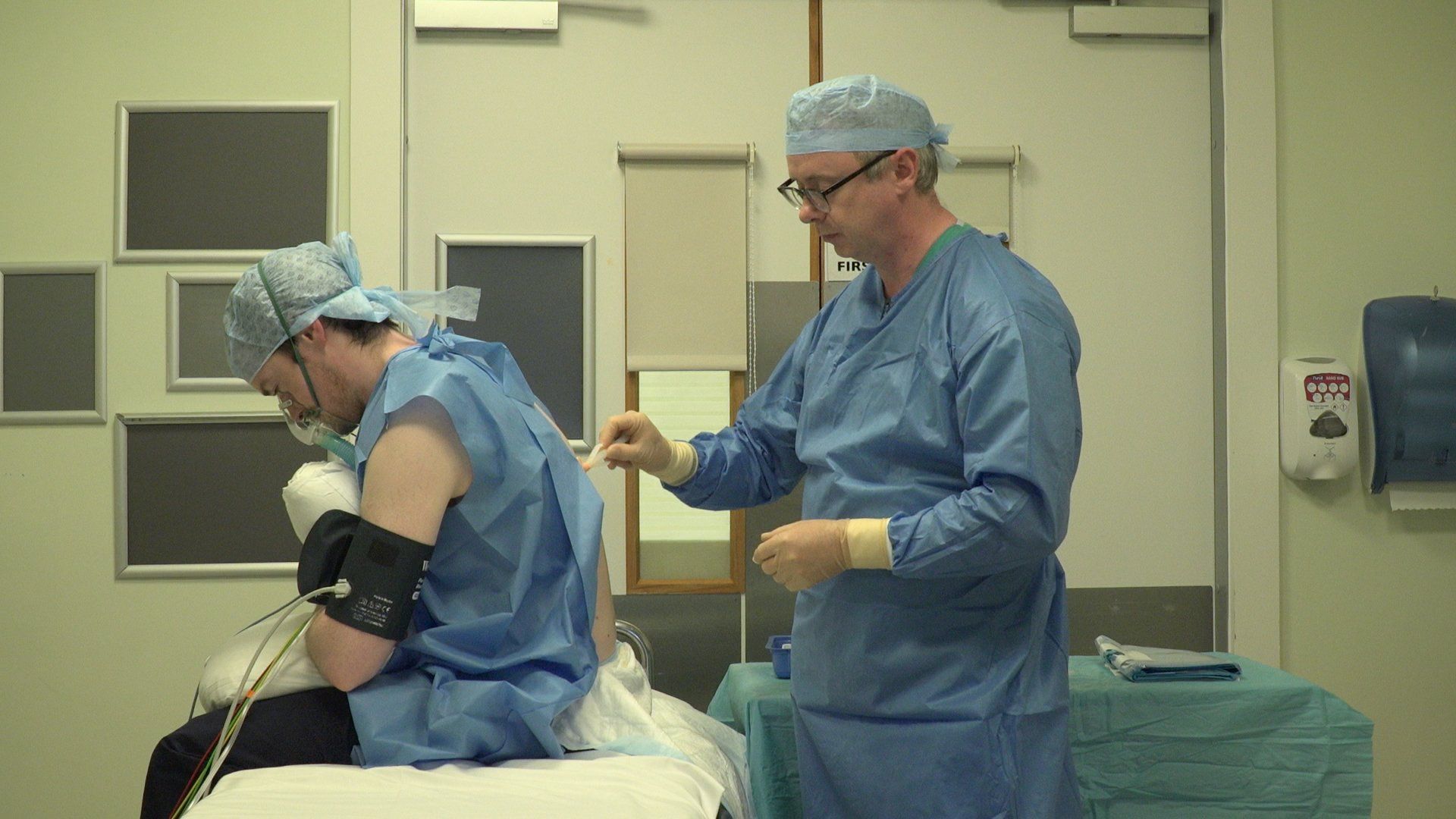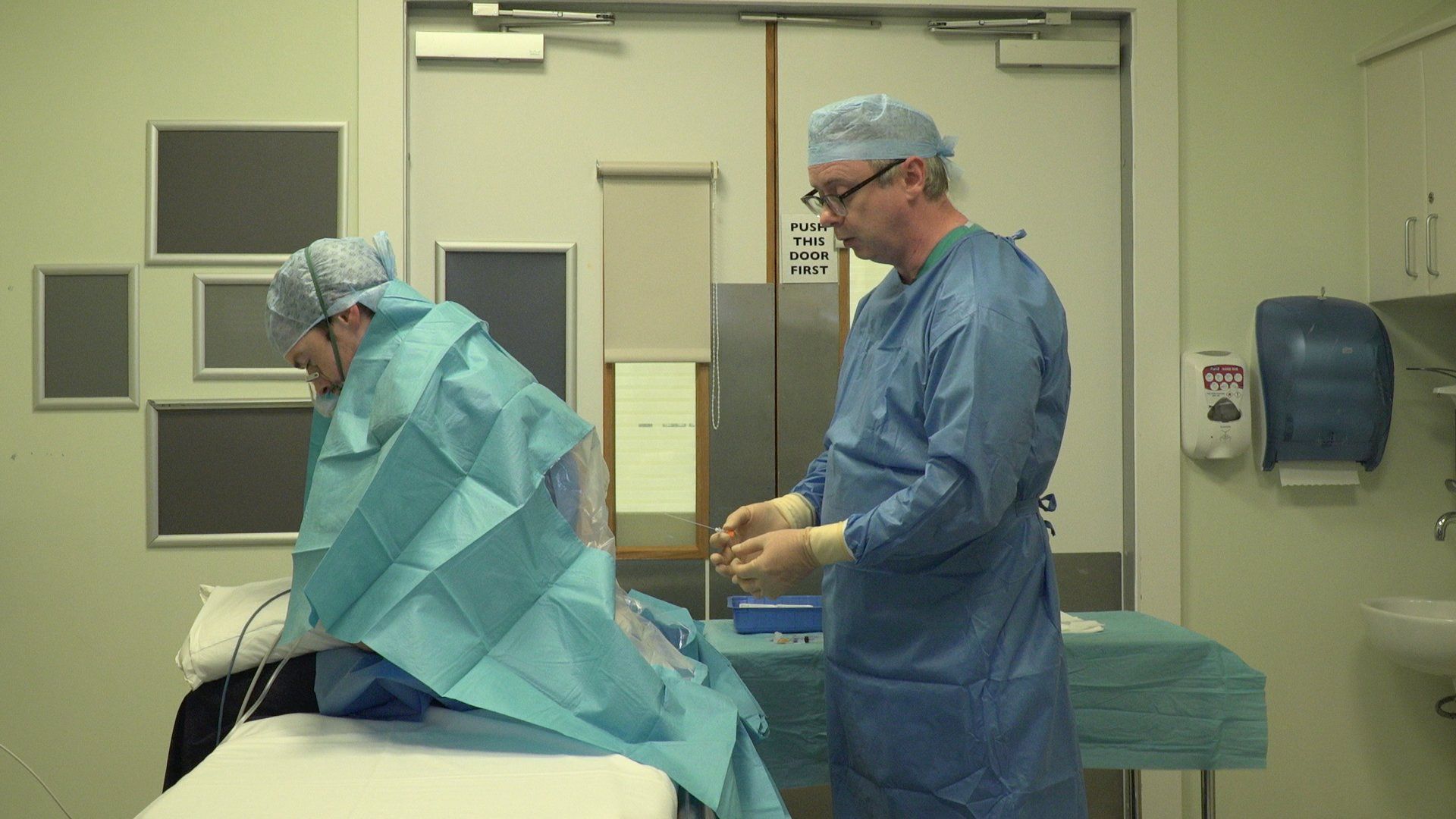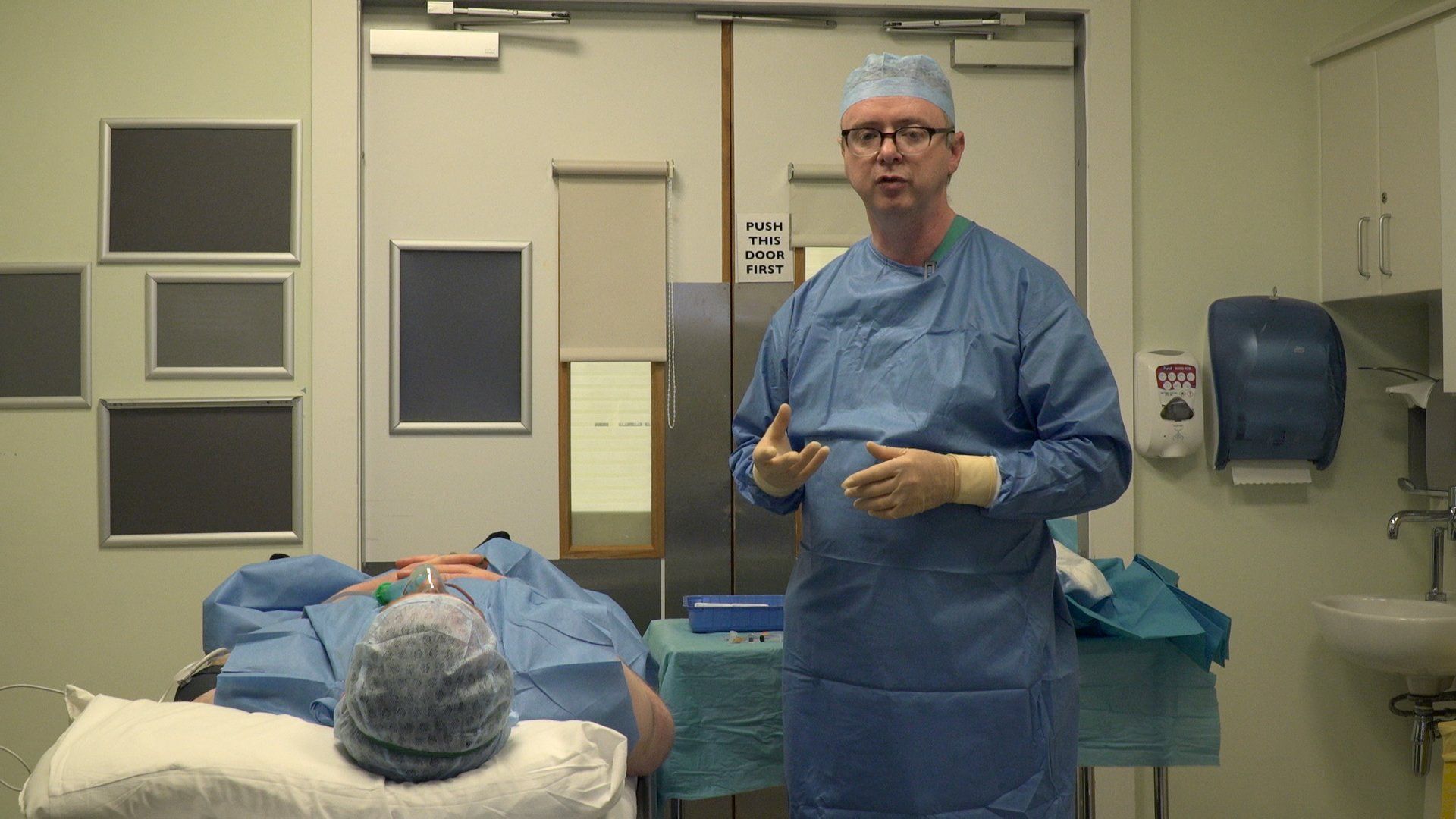ANESTHESIOLOGIST
Types of Anesthetic
Benefits of Spinal Anesthesia
Spinal Anesthetic Procedure
Your Anesthesist will guide you through this procedure and will be aided by the Anesthetic Nurse and a Multi-Task Attendant. If you have any questions or concerns you should talk to your anesthetic team.
Procedure
The skin will be sterilisted with antisecptic solution and local anestheic administered injected to the site.
The spinal needle is then inserted into the spinal canal and the anesthetic solution injected.
A dressing is placed over the injection site and you will be helped to lie down. After 10 minutes the spinal anesthetic will have taken effect and this will be checked prior to proceeding.
Sedation
You will hear noises during your surgery (talking and banging), if this is something that you would rather not hear you can listen to music or speak to your anesthesist about getting sedation medication to help you sleep through the surgery. Most people recieve some sedation to help them relax and in general wake up at the end of the procedure after a restful sleep.
Complications Of Spinal Anesthesia










